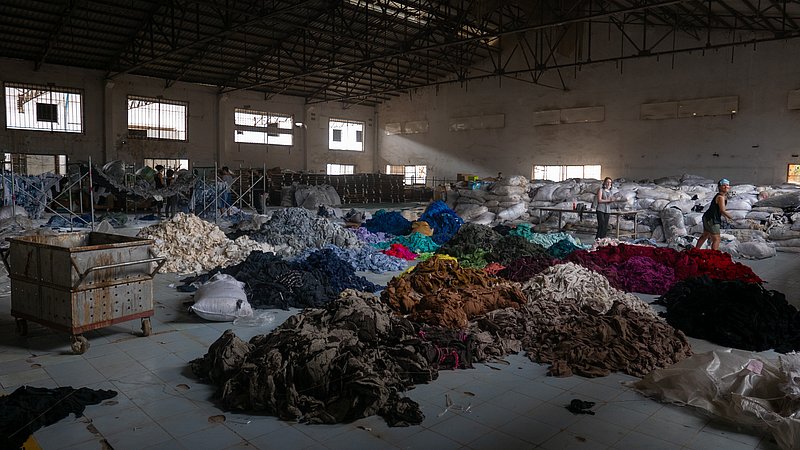Actually, second-hand clothing is a good thing! It extends the life of the clothes, it benefits people who depend on second-hand clothes for financial reasons, for example, and it protects the environment. In rich countries, we like to buy our conscience this way - whether consciously or unconsciously. According to the motto: "Well, my lifestyle is at the expense of people in the Global South - but at least I can do something good with my clothes now".
Unfortunately, this is not true either - not even to a certain extent. Pictures of mountains of textiles along the Nairobi River are a good illustration of this. They are not an isolated case: in the Chilean Atacama Desert - the driest desert in the world - there are also mountains full of clothes from the USA and Europe.
A new investigative report by the environmental organisation Greenpeace shows that there are many examples of this, especially in comparatively poor countries. The organisation spent months researching in countries of the Global South and found out: Textile waste - unusable for anyone - is often declared as "used clothing" and exported from rich countries like Germany to poorer countries on the African continent. In this way, people and companies in the Global North disregard their responsibility and avoid the costs of dealing with the problematic waste from disposable clothing. Worse, even the clothes that are actually still usable, and even brand new "overproduced" clothes, almost half end up in landfills, rivers or are burned outdoors.
"The fast fashion industry has turned clothes into non-recyclable plastic disposable items, like a plastic bag," says Viola Wohlgemuth, resource conservation expert at Greenpeace. "With our research, we uncover how the countries and companies of the Global North are shirking their responsibility for this hazardous waste. They leave the people in East Africa alone with the exported plastic textile waste - without any infrastructure for disposal."
A look at the figures shows that this is not just one of many problems related to plastic pollution worldwide: The fashion industry is responsible for up to ten percent of global greenhouse gas emissions and is one of the main causes of global water pollution. More than 80 percent of the environmental impact takes place in the countries of the Global South, where most garments are produced.
The same goes for the second-hand trade: in Germany alone, more than one million tonnes of old clothes are collected every year. The global trade in used clothing increased tenfold between 1990 and 2004 to a value of around one billion dollars per year. In 2021, the market value was already 36 billion dollars, with an expected growth to 77 billion dollars in 2025. The majority is exported to Eastern Europe and Africa. But many garments no longer have market value because they are defective, dirty or unsuitable for the local climate. Greenpeace research has shown that 30 to 40 percent of imports can no longer be sold. Official data on the actual proportion of exported old clothes that end up as waste is not available. But according to Greenpeace, in Ghana, for example, about 15 million used clothes from the UK, Europe, North America and Australia end up in the capital Accra every week, flooding the city's sprawling clothing market. Used and second-hand clothes shipped to Africa are locally known as "mitumba", a word from Kiswahili. It means bales or bundles, after the form in which the goods are usually sold to retailers.
In addition to the measures that each and every one of us can take to only hand in really usable second-hand clothes, it is important that something changes at the political level. This could mean, for example, that unusable old clothes can be sent back to the country of origin. In this way, exporters from the Global North would be more motivated to export only usable clothing. It would also be good to have a global tax that finances the environmentally sound, separate collection of textiles and potential damage. Of course, it would be even better to start at the production stage: and no more synthetic fibres would be used.


